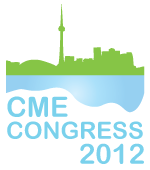Caryn Brown (Centra)
Expected Outcomes
At the conclusion of this session, participants will be able to:
- DescribetherationalebehindthetransitionofCMEprogramoversightfromtheMedicalStaffOffice to the Professional Development Department.
- Recognize the value of the collaborative effort in promoting a culture of CME sustainability and performance.
- Identify three outcome measures that define CME provider performance as a result of the change.
Purpose and Format
This didactic presentation (workshop) will review and detail the transition of the administration of a regional hospital system’s CME provider unit from the Medical Staff Office to the Professional Development Department. Discussion will include the state of CME prior to the transition, the transition process, and the transition outcomes. Additional presentation information will include the program structure, program leadership change (the appointing of a new CME Coordinator), and program outcomes.
Key Points
A regional health system’s CME program was in probationary status and in danger of losing accreditation. As a result, the Vice President of Medical Affairs asked the Director of Professional Development to assume responsibility of the CME program. The Continuing Nursing Education Coordinator (CNE) and the Director of Professional Development conducted an internal review of the state of CME at Centra. After this review, the Director of Professional Development appointed the CNE Coordinator to the role of CME Coordinator (to perform dual roles). The CNE/CME Coordinator is a Registered Nurse prepared at the Masters level and has expertise not only in Professional Development, but in the interpretation and application of Continuing Education and Commercial Support standards, making the transition logical and smooth. Using the resources and expertise available through the Professional Development Department, the CME program underwent a major overhaul which included restructuring, the creation and adoption of CME policies and procedures, enhanced recordkeeping practices, and improvement to the activity planning, implementation, and evaluation processes. The integration of CME into Professional Development served to break down silos, facilitate a more expanded approach to CME, magnify the focus on measurable program outcomes, and open doors for interdisciplinary education. For this CME program, change meant opportunity and opportunity meant improved provider performance.
Declaration
No conflicts or relationships to disclose.





